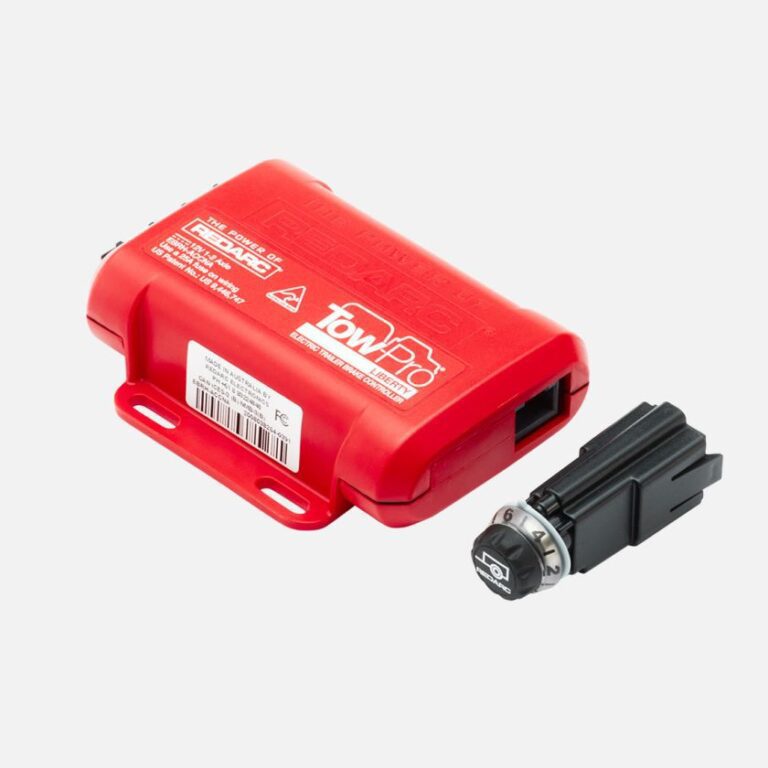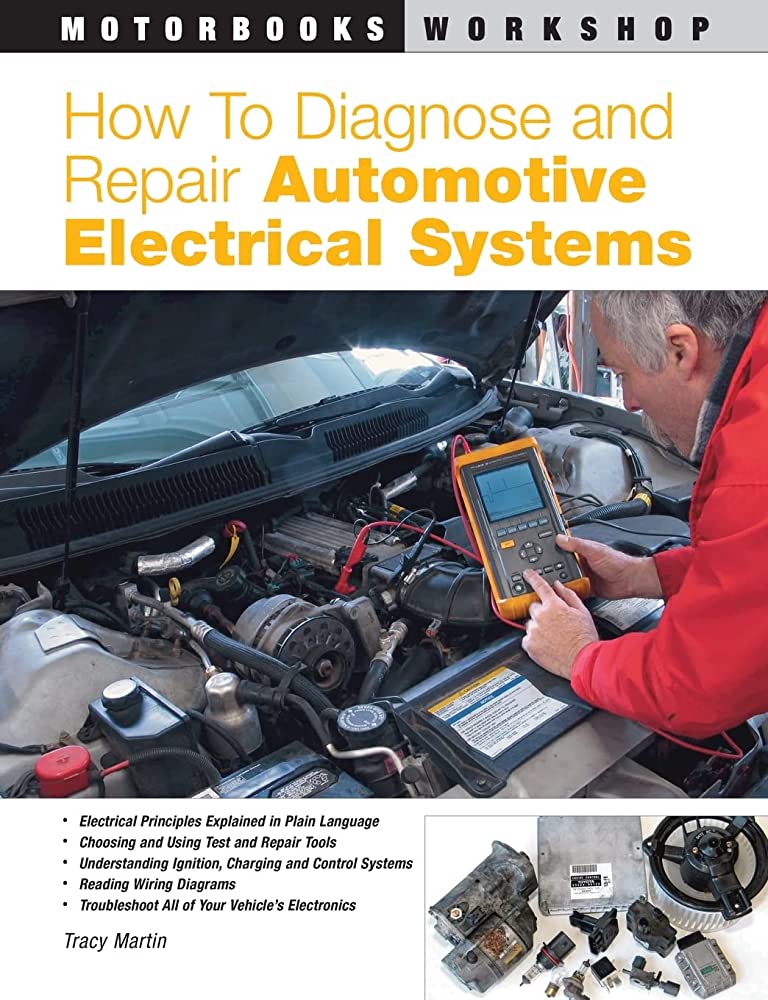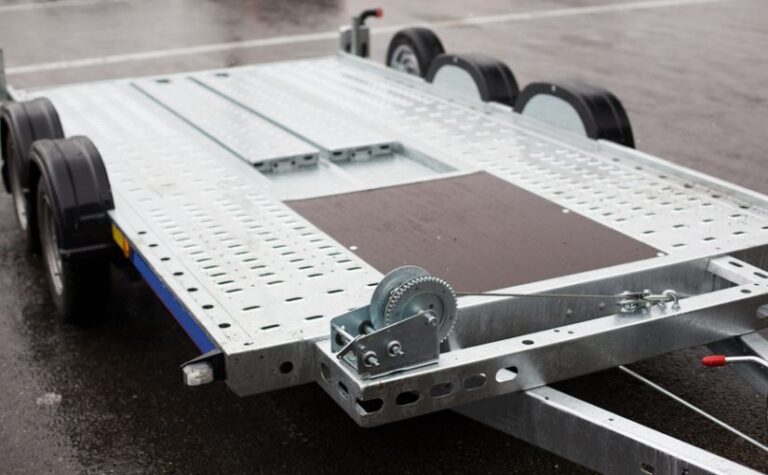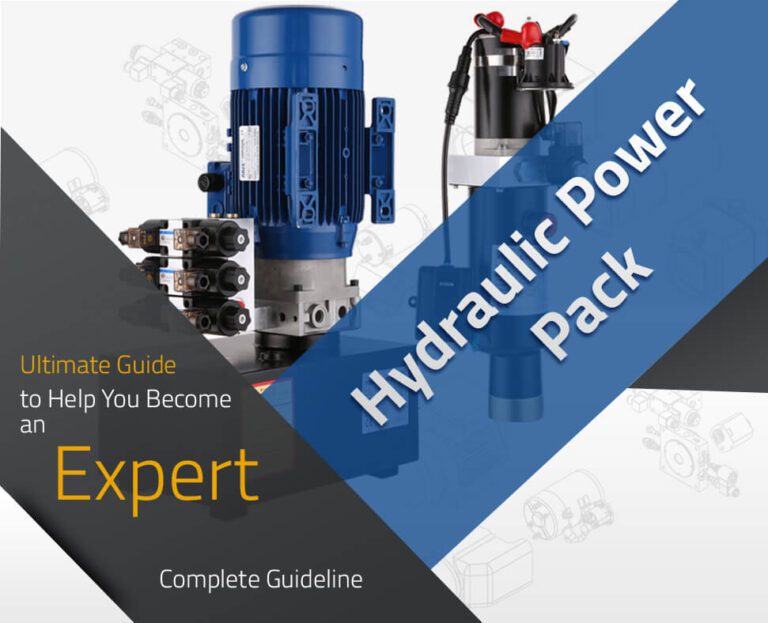Trailer Brake Controller Troubleshooting : Unleash Expert Tips and Solutions
Trailer brake controller troubleshooting involves identifying and resolving issues with the braking system of a trailer. This process requires a systematic approach to diagnose and fix various common problems that can occur with trailer brake controllers.
By following specific steps such as checking connections, inspecting the brake controller settings, and testing the brakes for responsiveness, you can effectively troubleshoot and resolve any braking issues with your trailer. This ensures a safe and smooth towing experience while also preventing potential accidents on the road.
With the right troubleshooting techniques, you can quickly identify and fix problems with your trailer brake controller, ensuring optimal functionality and performance.

Credit: atribecalledcars.com
Understanding Trailer Brake Controllers
What Are Trailer Brake Controllers?
A trailer brake controller is a device that allows you to control and manage the braking system of your trailer when towing it behind your vehicle. It is an essential component that ensures smooth and safe braking while towing heavy loads.
Here are the key points to understand about trailer brake controllers:
- Trailer brake controllers work by transferring the necessary braking power to the trailer’s brakes, allowing them to engage and slow down or stop the entire rig.
- These controllers are usually mounted inside the tow vehicle’s cabin, within easy reach of the driver. They come with adjustment settings, allowing you to control the intensity of the trailer brakes based on the load you’re towing.
- By applying the trailer brakes independently from the tow vehicle’s brakes, trailer brake controllers help prevent wear and tear on the vehicle’s brakes and improve overall braking efficiency.
- There are various types of trailer brake controllers available on the market, each with its own benefits and features. Understanding the different types can help you choose the one that best suits your towing needs.
Different Types Of Trailer Brake Controllers
When it comes to trailer brake controllers, there are three main types to consider:
- Time-delayed brake controllers:
- These controllers allow you to manually set a delay time for the trailer brakes to engage after you press the brake pedal in your tow vehicle.
- They are generally less expensive and relatively easy to install.
- However, they might not provide the same level of sensitivity and control as other types of brake controllers.
- Proportional brake controllers:
- Proportional brake controllers are designed to apply the trailer brakes in proportion to the braking force applied in the tow vehicle.
- They provide a more seamless and intuitive braking experience, mimicking the braking behavior of the tow vehicle.
- Proportional brake controllers are typically regarded as the most effective and user-friendly option.
- Electric-over-hydraulic brake controllers:
- Electric-over-hydraulic brake controllers are specifically designed for trailers equipped with hydraulic brakes.
- They convert the electrical signal from the tow vehicle into hydraulic pressure, allowing for precise and powerful braking.
- This type of brake controller is commonly used for larger trailers and heavy-duty towing applications.
Advantages Of Using Trailer Brake Controllers
Using a trailer brake controller offers several advantages that enhance the safety and convenience of towing. Here are the key benefits:
- Improved braking control: With a trailer brake controller, you have better control over the braking force applied to your trailer, ensuring a smoother and safer towing experience.
- Reduced stopping distance: By engaging the trailer brakes simultaneously with the tow vehicle brakes, you can significantly reduce the stopping distance, especially when towing heavier loads.
- Preservation of tow vehicle brakes: By distributing the braking force between the tow vehicle and trailer, a brake controller helps prevent excessive wear on the tow vehicle’s brakes, extending their lifespan.
- Enhanced stability: Properly working trailer brakes help maintain stability during braking, reducing the risk of trailer sway and increasing overall safety.
- Compliance with regulations: In many jurisdictions, using a trailer brake controller is a legal requirement when towing trailers exceeding certain weight limits. It ensures compliance with safety regulations and helps prevent accidents.
These advantages highlight the significance of utilizing high-quality trailer brake controllers for a safer and more controlled towing experience.
Common Issues With Trailer Brake Controllers
Trailer brake controllers are essential for ensuring the safe operation of trailers, as they enable drivers to control and apply the brakes on their trailers. However, like any electronic device, trailer brake controllers can experience issues that may hinder their performance.
In this section, we will discuss some common issues that may arise with trailer brake controllers:
Delayed Braking Response
- Delayed braking response can be a frustrating issue with trailer brake controllers. It occurs when there is a noticeable delay between pressing the brake pedal and the brakes on the trailer being applied.
- This problem can be caused by various factors, including a faulty or worn-out brake controller, loose connections, or issues with the wiring harness.
- To troubleshoot delayed braking response, consider the following steps:
- Check the connections between the brake controller and the trailer’s braking system, ensuring they are secure and free from corrosion.
- Inspect the wiring harness for any damage or loose connections.
- Consult the brake controller’s manual or contact the manufacturer for specific troubleshooting steps.
Inconsistent Braking Power
- Inconsistent braking power is another common issue faced by trailer brake controllers. It refers to situations where the brakes on the trailer apply unevenly or with varying intensity.
- Several factors can contribute to this problem, such as uneven brake pad wear, uneven trailer weight distribution, or incorrect brake controller settings.
- To address inconsistent braking power, consider the following solutions:
- Inspect the brakes on the trailer for signs of uneven wear or damage. Replace any worn-out or damaged brake pads.
- Ensure that the trailer is loaded properly, with the weight evenly distributed to avoid excessive strain on one side.
- Adjust the brake controller settings according to the trailer’s weight and braking requirements. Consult the brake controller’s manual for specific adjustment instructions.
Brake Controller Not Responding
- A brake controller not responding at all is a significant issue that requires immediate attention. It means the brake controller is not functioning and is unable to send signals to the trailer’s braking system.
- This problem can be caused by various factors, including blown fuses, electrical system failures, or a faulty brake controller.
- To troubleshoot a brake controller not responding, consider the following steps:
- Check the fuse connected to the brake controller. Replace it if necessary.
- Inspect the electrical connections between the brake controller and the towing vehicle for any loose or damaged wires.
- If the above steps do not resolve the issue, it may be necessary to replace the brake controller.
Remember, it is crucial to address any issues with trailer brake controllers promptly to ensure the safety of your trailer and its occupants. If you are unsure about troubleshooting or fixing the problem, consult a professional for assistance.
Troubleshooting Steps For Delayed Braking Response
Checking Wiring Connections
One common cause of delayed braking response in trailer brake controllers is faulty wiring connections. It’s essential to ensure that all wiring connections are secure and properly connected. Here are the key points to keep in mind when checking the wiring connections:
- Inspect the wiring harness and connectors for any signs of damage, such as loose wires or corrosion.
- Verify that the ground wire is securely connected to a clean and unpainted metal surface.
- Ensure that the power wire is connected to a reliable power source with the appropriate voltage.
- Double-check the brake wire connections to the trailer brakes, making sure they are tightly connected.
- If any of the connections appear loose or damaged, repair or replace them as necessary.
Adjusting Brake Gain Setting
Another potential reason for delayed brake response is an incorrect brake gain setting. The brake gain determines the amount of braking force applied to the trailer’s brakes. Follow these steps to adjust the brake gain setting properly:
- Begin by positioning the trailer on a level surface and engaging the emergency brake.
- Take note of the brake gain setting on the controller, typically displayed as a numeric value or percentage.
- Start with a conservative brake gain setting, usually around 5-7, and test the braking response.
- If the braking response is delayed or insufficient, gradually increase the brake gain in small increments.
- Test the braking response after each adjustment until the desired level of braking force is achieved.
Testing The Brake Controller Output
If troubleshooting the wiring connections and adjusting the brake gain setting doesn’t resolve the issue, it may be necessary to test the brake controller output. Here’s how to do it:
- Connect a multimeter to the brake controller output wire.
- With the ignition on and the brake controller activated, check the voltage reading on the multimeter.
- The voltage should correspond to the braking force applied by the controller. Consult the brake controller’s manual for the appropriate voltage range.
- If the voltage reading is outside the expected range or inconsistent, there may be an issue with the brake controller. Consider consulting a professional for further diagnosis and repair.
By following these troubleshooting steps for delayed braking response, you can identify and resolve issues with your trailer brake controller. Remember to always prioritize safety and consult a professional if you are unsure or unable to resolve the problem on your own.
Troubleshooting Steps For Inconsistent Braking Power
Inspecting Brake Pads And Rotors
When your trailer’s braking power becomes inconsistent, one potential culprit could be worn-out brake pads and rotors. By inspecting these components, you can identify any issues and take appropriate action. Here are the key steps to follow:
- Visual inspection:
- Check for brake pad wear by examining the thickness and condition of the brake pads. Look for any signs of uneven pad wear or excessive thinning.
- Inspect the rotors for signs of damage, such as scoring, grooves, or rust. Damaged rotors can negatively affect braking performance.
- Measure brake pad thickness:
- Use a caliper tool to measure the thickness of the brake pads. Refer to the manufacturer’s specifications to determine whether the pads need replacing.
- Ensure that the minimum required thickness is met to maintain optimal braking power.
- Check brake pad tension:
- Determine if the brake pads are securely fastened to the caliper by checking for any loose or rattling pads. Loose pads can cause inconsistent braking.
- Examine rotors for warping:
- Test if the rotors are warped by using a dial indicator. Place the indicator against the rotor surface and rotate the rotor. Any noticeable runout indicates warping, which can lead to uneven braking.
- Clean brake pads and rotors:
- Remove any debris, dirt, or brake dust from the brake pads and rotors using a suitable cleaner. Accumulated dirt can affect the braking performance.
Checking Brake Fluid Levels
Another factor that can contribute to inconsistent braking power is insufficient brake fluid. To ensure optimal brake performance, follow these steps to check the brake fluid levels:
- Locate the brake fluid reservoir:
- Identify the brake fluid reservoir in your trailer. It is usually mounted near the master cylinder or on top of it.
- Wipe the reservoir cap:
- Use a clean cloth to wipe the dirt or dust from the reservoir cap before opening it. This prevents any contaminants from entering the brake system.
- Inspect the fluid level:
- Open the reservoir cap and visually inspect the brake fluid level. It should be between the minimum and maximum markings on the reservoir.
- Top up the fluid if necessary:
- If the fluid level is below the recommended range, add the appropriate brake fluid type as specified by the trailer manufacturer. Be cautious not to overfill the reservoir.
- Check for leaks:
- Inspect the brake lines and connections for any signs of fluid leakage. Leaks can lead to a decrease in braking power and should be addressed immediately.
Assessing Wheel Bearing Health
Wheel bearings play a crucial role in maintaining smooth and consistent braking. To ensure your trailer’s wheel bearings are in good health, follow these steps:
- Inspect for noise or play:
- While rotating the trailer’s wheels, listen for any unusual noise or play. Wheel bearing issues can manifest as grinding, squeaking, or humming sounds.
- Check for excessive heat:
- After driving, carefully touch each wheel to check for excessive heat. Abnormally hot wheels may be a sign of wheel bearing problems.
- Perform wheel wiggle test:
- Firmly grasp the tire and attempt to wiggle it in a vertical and horizontal direction. Excessive play indicates worn or loose wheel bearings.
- Visual inspection:
- Examine the wheel bearings for any visible signs of damage, wear, or rust. Damaged bearings should be replaced promptly to maintain safe braking performance.
- Regrease or replace:
- If you notice any issues with the wheel bearings, consult the trailer manufacturer’s guidelines. In some cases, regreasing may address the problem, while in others, replacement may be necessary.
Remember, addressing these troubleshooting steps for inconsistent braking power can help ensure the safety and reliability of your trailer’s braking system. Regular maintenance and inspections are essential to prevent potential accidents caused by inadequate braking.
Troubleshooting Steps For Brake Controller Not Responding
Verifying Power Supply
If your trailer brake controller is not responding, the first step in troubleshooting is to verify the power supply. Here are the key points to keep in mind:
- Check the power connections: Ensure that all power connections are properly secured and that there are no loose or corroded wires.
- Test the voltage: Use a multimeter to measure the voltage at the power supply terminals of the brake controller. The voltage should match the manufacturer’s specifications.
- Check the fuse: Inspect the fuse for the brake controller. If it is blown, replace it with a new fuse of the correct amperage.
- Test the battery: Check the battery voltage to ensure it is providing enough power to the brake controller. A weak battery can cause the controller to malfunction.
Resetting The Brake Controller
If verifying the power supply did not solve the issue, the next troubleshooting step is to reset the brake controller. Here’s what you need to do:
- Locate the reset button: Most brake controllers have a reset button that needs to be pressed to reset the device.
- Press and hold the reset button: Press and hold the reset button for a few seconds until the controller resets.
- Check for a reset indicator: Some brake controllers have an led indicator that will flash or change color to indicate a successful reset.
- Follow the manufacturer’s instructions: Refer to the brake controller’s manual to ensure you are performing the reset correctly.
Replacing Faulty Components
If the brake controller still does not respond after verifying the power supply and resetting it, it may be necessary to replace faulty components. Consider the following steps:
- Inspect wiring and connections: Thoroughly inspect all wiring and connections for any signs of damage, corrosion, or loose connections. Replace any damaged components.
- Test the brake controller on another vehicle: If possible, connect the brake controller to another vehicle to determine if the issue is with the controller or the vehicle’s wiring.
- Replace the brake controller: If all other troubleshooting steps have been unsuccessful, it may be necessary to replace the brake controller with a new one.
- Seek professional assistance: If you are unsure about the replacement process or have exhausted all other troubleshooting options, it is advisable to seek assistance from a professional technician.
Remember to refer to the specific brake controller’s manual for detailed instructions and troubleshooting specific to your device. By following these troubleshooting steps, you can identify and resolve issues with a brake controller that is not responding.
Tips To Enhance Trailer Brake Controller Performance
Regular maintenance and cleaning:
- Regular maintenance and cleaning of your trailer brake controller can greatly improve its performance and ensure it operates optimally. Here are some key points to keep in mind:
- Clean the controller regularly to remove any dirt, dust, or grime that may accumulate on its surface. Use a mild cleaning solution and a soft cloth to gently wipe away any debris.
- Inspect the wiring connections and make sure they are secure and free from damage. Loose or damaged wiring can cause poor performance or even complete brake failure.
- Check the brake fluid levels in your trailer’s brake system. Low brake fluid can affect the responsiveness of your brake controller. Top up the fluid if necessary, following the manufacturer’s guidelines.
Upgrading to a high-quality brake controller:
- If you’re experiencing frequent problems with your trailer brake controller, it may be time to consider upgrading to a high-quality unit. Here’s what you need to know:
- Research and choose a brake controller that is specifically designed for your towing needs. Consider factors such as the weight of your trailer, the number of axles, and the type of brakes it has.
- Opt for a proportional brake controller that senses the braking force exerted by your vehicle and applies the same amount of force to the trailer brakes. This ensures a smoother and more controlled braking experience.
- Look for a brake controller with advanced features like adjustable brake gain, manual override, and diagnostics. These features can enhance performance and make troubleshooting easier.
Properly adjusting the brake gain:
- Properly adjusting the brake gain on your trailer brake controller is crucial for efficient braking. Follow these steps to ensure it’s properly set:
- Begin by setting the brake gain to the middle position. This will provide a balanced braking force to the trailer brakes.
- Take your vehicle and trailer for a test drive, paying attention to the braking performance. If the trailer brakes lock up or don’t engage enough, adjust the brake gain accordingly.
- Gradually increase or decrease the brake gain in small increments until you achieve the desired braking response. The goal is to find the right balance where the trailer brakes engage smoothly without overpowering or underperforming.
Remember, regular maintenance and cleaning, upgrading to a high-quality brake controller, and properly adjusting the brake gain are all key factors in enhancing the performance of your trailer brake controller. By following these tips, you can ensure a safe and efficient towing experience.
Frequently Asked Questions About Trailer Brake Controller Troubleshooting
How Often Should I Check My Trailer Brake Controller?
It is important to regularly check your trailer brake controller to ensure proper functionality and safety while towing. Here are some key points to consider:
- Routine inspections: Regularly inspect your trailer brake controller to identify any signs of wear and tear or potential issues.
- Visual check: Look for any physical damage, loose connections, or corrosion on the controller and its wiring.
- Functionality test: Test the trailer brake controller by connecting it to a trailer and checking if it engages the brakes smoothly and proportionally.
- Adjustments: Make necessary adjustments to the controller settings based on the load and towing conditions.
- Recommended frequency: Check your trailer brake controller before each towing trip and perform a more thorough inspection at least once a year or as suggested by the manufacturer.
Can I Troubleshoot My Trailer Brake Controller Myself?
If you are experiencing issues with your trailer brake controller, it is possible to troubleshoot and resolve some problems on your own. Here are the key points to keep in mind:
- Refer to the manual: Start by referring to the user manual of your trailer brake controller. It will provide valuable information on troubleshooting steps specific to your model.
- Basic troubleshooting: Begin with basic troubleshooting techniques, such as checking the connection, ensuring proper voltage supply, and inspecting the fuses.
- Resetting the controller: Some issues can be resolved by simply resetting the controller. Follow the manufacturer’s instructions for the reset process.
- Seek professional help: If you are unable to diagnose or fix the problem on your own, it is recommended to seek assistance from a qualified mechanic or trailer brake controller specialist.
What Are The Signs Of A Failing Trailer Brake Controller?
Recognizing the signs of a failing trailer brake controller is crucial to avoid potential accidents or damage. Here are the key points to watch out for:
- Brake imbalance: If you notice that the trailer brakes are not engaging evenly or if the trailer pulls to one side during braking, it could indicate a failing brake controller.
- Inconsistent braking: If the braking intensity is inconsistent, either too soft or too hard, it may be a sign of a faulty brake controller.
- Brakes not engaging: If the trailer brakes fail to engage at all, or if the braking response is delayed, it could indicate a problem with the controller.
- Warning lights: Pay attention to any warning lights or error codes displayed on the controller. These can provide valuable information about potential issues.
- Unusual noises: Strange noises, such as grinding or squealing, during braking may indicate a failing brake controller.
Remember, it is always important to address any issues with your trailer brake controller promptly to ensure the safety of yourself and others on the road.
Frequently Asked Questions Of Trailer Brake Controller Troubleshooting
How Do I Troubleshoot A Trailer Brake Controller?
To troubleshoot a trailer brake controller, start by checking the power connections, adjusting the brake gain, and testing the brake lights.
Conclusion
Troubleshooting your trailer brake controller is essential for ensuring safety and reliability during towing. By following the troubleshooting steps outlined in this blog post, you can identify and resolve common issues such as unresponsive brakes or erratic braking performance. Remember to check the power source, connections, and settings of your brake controller as these are often the culprits behind problems.
Regular maintenance and calibration of your brake controller will also help prevent potential malfunctions in the future. Checking for software updates and consulting the manufacturer’s guidelines are additional steps that can contribute to a smoother towing experience. Stay informed and proactive when it comes to trailer brake controller troubleshooting, and you will be rewarded with a more efficient and secure journey.
Your safety and peace of mind are worth the effort.







